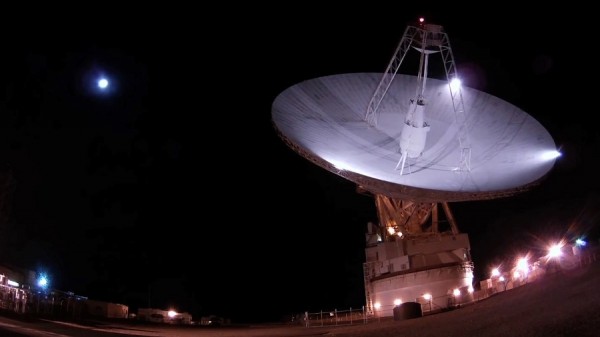By Ana Verayo, | March 11, 2017

The DSS-14 is NASA's 70-meter (230-foot) antenna located at the Goldstone Deep Space Communications Complex in California. (NASA/JPL-Caltech)
NASA has located a lost spacecraft that disappeared for several years. NASA's Jet Propulsion Laboratory announced that they found the NASA Lunar Reconnaissance Orbiter along with India's Chandrayaan-1 spacecraft that was also orbiting the moon.
NASA JPL scientists detected these lost lunar spacecraft with the help of a new application that is used by a ground-based interplanetary radar. According to radar scientist Marina Brozovic from NASA's Jet Propulsion Laboratory, finding the LRO was relatively easy since we were working with mission scientists and navigators that provided orbit data of its location. However, finding India's Chandrayaan-1 was a bit more challenging since the last contact made with the spacecraft was in August 2009.
Like Us on Facebook
India's Chandrayaan-1 lunar orbiter was launched by the Indian Space Research Organization in October 2008. It measures five feet across and is shaped like a cube. NASA's LRO was launched in June 2009.
Scientists from NASA's Jet Propulsion Laboratory along with researchers from California Institute of Technology discovered the Chandrayaan-1 lunar orbiter some 124 miles above the surface of the moon. The orbiting spacecraft was considered lost by mission scientists.
To find this lunar spacecraft, NASA's JPL utilized an antenna measuring 230 feet located in NASA's Goldstone Deep Space Communications Complex in California. This antenna beamed out powerful microwaves to the direction of the moon. When radar echoes bounced back from the moon's orbit, the data was obtained by the Green Bank Telescope in West Virginia.
After collecting this radar data, the Arecibo Observatory operated by the National Science Foundation carried out follow-up observations. The Arecibo Observatory possesses the most powerful radar system in the world.
NASA JPL scientists say that hunting down the LRO and the Chandrayaan-1 provided this new capability in terms or radar technology. The massive radar antennas in Goldstone, Arecibo, and Green Bank observatories have proven that they can detect and monitor small spacecraft in lunar orbit. In addition, ground-based radars can also become a crucial part of future robotic missions to the moon as a hazard assessment tool to predict collisions and also as a safety mechanism to aid in spacecraft navigation and communications.
-
Use of Coronavirus Pandemic Drones Raises Privacy Concerns: Drones Spread Fear, Local Officials Say

-
Coronavirus Hampers The Delivery Of Lockheed Martin F-35 Stealth Fighters For 2020

-
Instagram Speeds Up Plans to Add Account Memorialization Feature Due to COVID-19 Deaths

-
NASA: Perseverance Plans to Bring 'Mars Rock' to Earth in 2031

-
600 Dead And 3,000 In The Hospital as Iranians Believed Drinking High-Concentrations of Alcohol Can Cure The Coronavirus

-
600 Dead And 3,000 In The Hospital as Iranians Believed Drinking High-Concentrations of Alcohol Can Cure The Coronavirus

-
COVID-19: Doctors, Nurses Use Virtual Reality to Learn New Skills in Treating Coronavirus Patients







